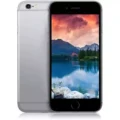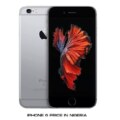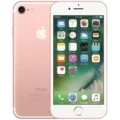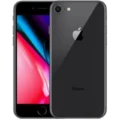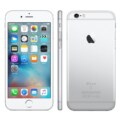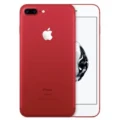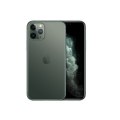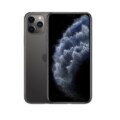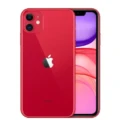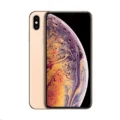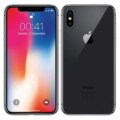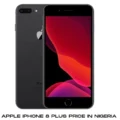- All Products
- Mobiles
- iphone xr Price In Nigeria
iphone xr Price In Nigeria
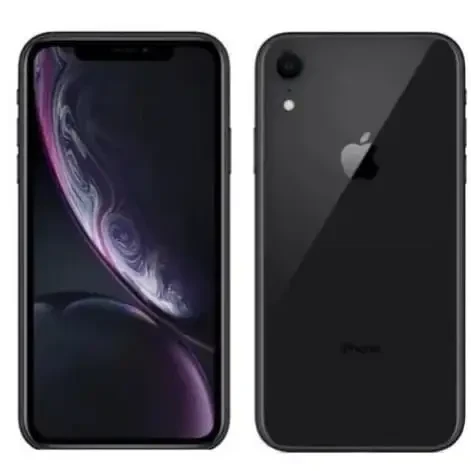

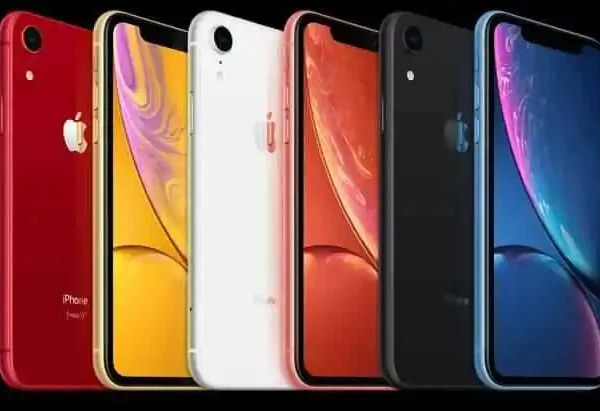
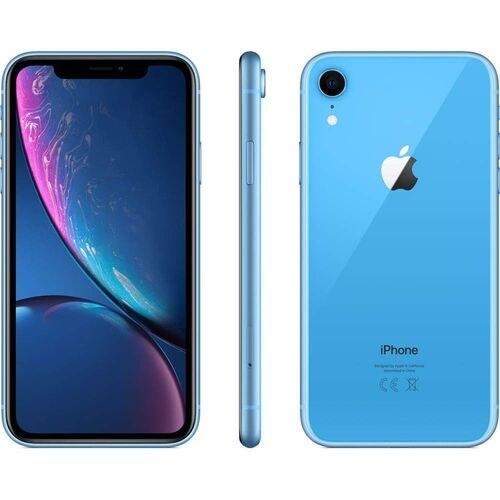

-
Battery: 2942 mAh
-
RAM: 3 GB
-
Storage: 64GB 3GB RAM, 128GB 3GB RAM, 256GB 3GB RAM
-
Display Size: 6.1
-
Camera: 12MP
-
OS: iOS 12, upgradable to iOS 17.3
Specs
General
| Announced | 2018, September 12 |
| Released | 2018, October 26 |
| Status | Available |
| Price | 248000 |
Design
| Dimensions | 150.9 x 75.7 x 8.3 mm (5.94 x 2.98 x 0.33 in) |
| Weight | 194 g |
| SIM <strong>SIM</strong> (Subscriber Identity Module) is a small card that contains mobile network subscriber's account information. This allows the phone using the card to attach to a mobile network. The SIM card is most commonly associated with GSM and UMTS mobile networks. Moving a SIM card from one phone to another allows a subscriber to switch mobile phones without having to contact their mobile network carrier. SIM cards can also be used by a phone to store limited amounts of data, such as phone numbers and text messages. | Nano-SIM and eSIM or Dual SIM (Nano-SIM, dual stand-by) |
| Build | Glass front (Corning-made glass), glass back (Corning-made glass), aluminum frame (7000 series) |
| Colors | Black, Red, Yellow, Blue, Coral, White |
Network
| Technology Type | GSM / CDMA / HSPA / EVDO / LTE |
Display
| Display Type <strong>Display Technology => </strong> A number of display technologies and types used in mobile phones => TFT (Thin Film Transistor), IPS (In-Place Switching), OLED (Organic Light Emitting Diode), AMOLED (Active-Matrix Organic Light-Emitting Diode), Super AMOLED (an even advanced version of AMOLED), Resistive Touchscreen (Resistive touchscreens contain two layer of conductive material with a very small gap between them which acts as a resistance), Capacitive Touchsceen (Capacitive touchscreen technology consists of a layer of glass coated with a transparent conductor) | Liquid Retina IPS LCD |
| Resolution | 828 x 1792 pixels, 19.5:9 ratio (~326 ppi density) |
| Size | 6.1 inches |
| Display Protection <strong>Display Protection => </strong> Gorilla Glass is a special alkali-aluminosilicate glass shield with exceptional damage resistance that helps protect mobile displays from scratches, drops, and bumps of everyday use, It is always better to go for a smartphone with Gorilla Glass for that added protection and peace of mind. | Scratch-resistant glass |
Platform
| Operating System <strong>OS => </strong> Every computer system run on a base software called Operating System (OS). Operating System controls all basic operations of the computer (such as smartphone, PDAs, tablet computers and other handheld devices). The Operating System allows the user to install and run third party applications (apps), apps are used to add new functionality to the device. | iOS 12, upgradable to iOS 17.3 |
| Chipset <strong>Chipset</strong> is a group of integrated circuits designed to perform one or a more dedicated functions, often with real time computing constraints, Popular smartphones are equipped with more advanced embedded chipsets that can do many different tasks depending on their programming. | Apple A12 Bionic (7 nm) |
| CPU <strong>CPU</strong> (Central Processing Unit) mostly known as processors, CPU processes instructions in order to carry out certain functions that make your device operate properly. Processors are often described as the brain of computers, smartphones and tablets, Smartphones and tablets rely on processors to carry out their every task, Processors are an incredibly important factor in selecting any type of computing device, including your smartphone. | Hexa-core (2x2.5 GHz Vortex + 4x1.6 GHz Tempest) |
| GPU <strong>GPU</strong> (Graphics Processing Unit) is a single-chip processor designed to rapidly manipulate and alter memory to accelerate the creation of images in a frame buffer intended for output to a display, This includes things such as lighting effects, object transformations, and 3D motion. | Apple GPU (4-core graphics) |
Storage
| External Slot | NO |
| Internal Storage <strong>Internal Storage</strong> is a data storage space (flash memory) mostly used in smartphones, tablets and other electronic devices where operating system, apps, music, photos, videos, files and other user data Is stored. | 64GB 3GB RAM, 128GB 3GB RAM, 256GB 3GB RAM |
Camera
| Main Camera | 12 MP, f/1.8, 26mm (wide), 1/2.55&quot;, 1.4µm, PDAF, OIS |
| Camera Features | Quad-LED dual-tone flash, HDR (photo/panorama) |
| Video | 1080p@60fps |
| Selfie Camera |
7 MP, f/2.2, 32mm (standard) SL 3D, (depth/biometrics sensor) |
| Features | HDR |
| Video | 1080p@60fps |
Connectivity
| Bluetooth <strong>Bluetooth</strong> is a wireless communications technology for exchanging data between mobile phones, headsets, computers and other network devices over short distances without wires, Bluetooth technology was primarily designed to support simple wireless networking of personal consumer devices. | 5.0, A2DP, LE |
| Wi-fi <strong>Wi-Fi</strong> is a popular wireless networking technology using radio waves to provide high-speed network connections that allows devices to communicate without cords or cables, Wi-Fi is increasingly becoming the preferred mode of internet connectivity all over the world. | Wi-Fi 802.11 a/b/g/n/ac, dual-band, hotspot |
| Wi-fi Hotspot | |
| USB | USB 2.0 |
| GPS <strong>GPS</strong> The Global Positioning System is a satellite-based radio navigation system, GPS permits users to determine their position, velocity and the time 24 hours a day, in all weather, anywhere in the world, In order to locate your position, your device or GPS receiver must have a clear view of the sky. | Yes |
| NFC <strong>NFC</strong> (Near field communication) is a set of standards for smartphones and similar devices to establish peer-to-peer radio communications with each other by touching them together or bringing them into proximity, usually no more than a few inches. | |
| FM Radio | No |
Features
| Sensors <strong>Sensors</strong> are electronic components that detects and responds to some type of input from the physical environment. The specific input could be light, heat, motion, moisture, pressure and location, The output is generally a signal that is converted to use in computing systems, a location sensor, such as a GPS receiver is able to detect current location of your electronic device. | Face ID, accelerometer, gyro, proximity, compass, barometer |
Battery
| Battery Type <strong>Battery Type => </strong> Cell phones run on various kinds of batteries depending on the manufacturer, phone size or shape and features. There are basically four types of cell phone batteries => Lithium Polymer, Lithium Ion, Nickel Metal Hydride and Nickel Cadmium. | Li-Ion (Lithium Ion) |
| Capacity <strong>Battery Capacity</strong> is a measure (typically in Amp-hr) of the charge stored by the battery, and is determined by the mass of active material contained in the battery. The battery capacity represents the maximum amount of energy that can be extracted from the battery under certain conditions. | 2942 mAh, non-removable (11.16 Wh) |
| charging | 15W wired, PD2.0, (Wireless (Qi) |
Sound
| Sound | Yes |
| 3.5mm jack | No |
The iPhone XR, released in October 2018, was a significant addition to Apple’s lineup, offering a balance of performance and affordability compared to its flagship counterparts. Here’s a detailed review of the iPhone XR:
Design and Build: The iPhone XR features a premium build with a glass back and aluminum frame. It comes in a variety of vibrant colors, adding a touch of personalization. The 6.1-inch Liquid Retina display stretches almost edge-to-edge, with slim bezels and the absence of a physical home button.
Display: The Liquid Retina display on the iPhone XR offers a resolution of 1792 x 828 pixels, providing crisp visuals and vibrant colors. While it’s not as high-resolution as the OLED displays found in the more expensive models, it still delivers an excellent viewing experience with wide color support and True Tone technology.
Performance: Powered by the A12 Bionic chip with Neural Engine, the iPhone XR offers impressive performance. It handles demanding tasks smoothly and efficiently, ensuring a lag-free user experience. It is well-optimized for running the latest apps and games.
Camera: The iPhone XR features a single 12MP wide-angle camera on the rear, capable of capturing detailed and vibrant photos. Despite lacking a dual-camera setup, it still supports Portrait mode and other advanced photography features through software enhancements. The front-facing 7MP TrueDepth camera supports Face ID for secure authentication.
Battery Life: One of the standout features of the iPhone XR is its impressive battery life. It outperforms many of its predecessors and even some of the more expensive models, providing all-day battery life for most users.
iOS Experience: Running on iOS, the iPhone XR benefits from regular updates, a user-friendly interface, and access to the App Store with a vast array of applications. It integrates seamlessly with other Apple devices and services, creating a cohesive ecosystem.
Storage Options: The iPhone XR comes in various storage configurations, ranging from 64GB to 256GB. While it lacks the expandable storage option, the available choices cater to different user needs.
Conclusion: The iPhone XR strikes a balance between performance, features, and price. It delivers a premium smartphone experience without the premium price tag. While it may lack some of the advanced features found in higher-end models, it remains a compelling option for users seeking a powerful and reliable device with a modern design. As of my last knowledge update in January 2022, it’s advisable to check for any newer iPhone models that may have been released since then.
